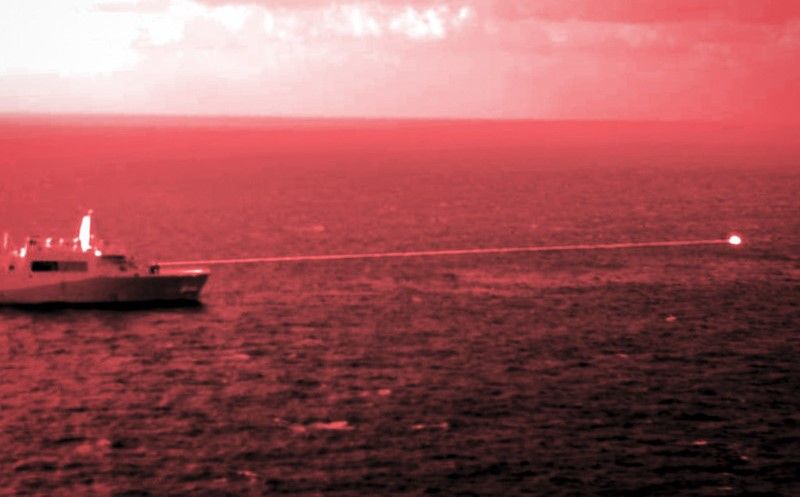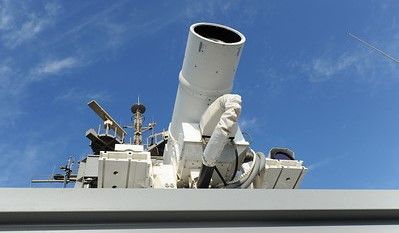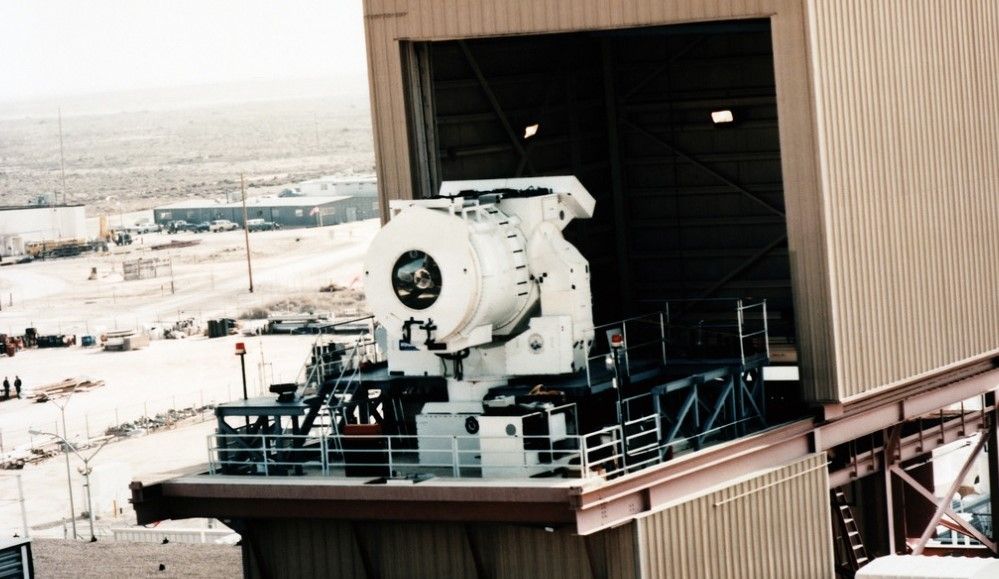Where is the US Navy’s Laser Program Heading?
From ODIN to HELIOS, from Optical Dazzling to High-powered Microwaves, how viable are America’s laser weapons?

The U.S. Navy is at the forefront of laser weapon development, investing heavily in these cutting-edge systems to bolster its defensive and offensive capabilities in today's volatile global landscape. From the powerful Laser Weapon System (LaWS) to the advanced High Energy Laser with Integrated Optical-dazzler and Surveillance (HELIOS), these directed-energy armaments are poised to play a pivotal role in ongoing conflicts.
This is particularly relevant in the role of counter drone defence which is desperately required in the shipping lane approaches to Odessa in Ukraine or the strategically crucial Red Sea where Houthi Rebels are threatening shipping with ‘kamikaze’ drones and anti-ship missiles.

Offering unparalleled precision, speed, and cost-effectiveness compared to traditional munitions, laser weapons can provide naval forces with a versatile and formidable array of tools to counter a wide range of threats, from enemy drones and small boats to missiles and even hostile satellites.
But how far have these advances come and will they be replacing conventional defences any time soon? Well, here is what the US Navy has publicly developed so far:
ODIN
Originally deployed on active service vessels in 2020, ODIN (Optical Dazzling Interdictor, Navy) uses a dazzling laser on incoming drone and missile sensors and cameras to confuse them so that they cannot guide correctly or find their target. While primarily designed for uncrewed flying objects, the system could also be used on crewed vehicles to cause glare in a pilot’s vision.
“This is a great example of our organic talent at the warfare centres all working together with ship’s company to deliver a system which will provide game-changing capability,” noted James F. Geurts, the Assistant secretary of the Navy for research development and acquisition at the time of its deployment.

However, since then attention has been focused on other systems, as ODIN has not performed well against very fast targets or those that do not have optical sensors or cameras. Consequently, ODIN is currently present on only eight warships, although research is still be conducted.
“We'll continue operational deployments,” explains Vice Adm. Brendan McLane, commander of U.S. Navy Pacific surface warships recently, “and provide key data to inform our defensive efforts for that.”
HELIOS
According to developers Lockheed Martin, HELIOS (High Energy Laser with Integrated Optical-dazzler and Surveillance) is a directed energy weapon that combines with the dazzling optical effect and other surveillance-based systems.
Originally installed with only 60Kw’s of power, the latest version is now 120Kw strong and deployed aboard USS Preble in the Pacific.
Despite having a much more destructive effect than ODIN, HELIOS has also underwhelmed military chiefs.

“We've tested it a few times,” said McLane in an interview with the industry journal Defense One, “[But] It hasn't turned out the way we want … yet.” Although McLane has acknowledged that the research is ongoing and that it has done well in drone defence. “We continue to partner with Lockheed Martin to kind of get it there … the potential and the capability is impressive. It's going to be capable of counter-UAS [uncrewed aircraft system], counter-ISR [Intelligence, surveillance, and reconnaissance].”
With this in mind, there is also work being done on a 300Kw prototype, with McLane stating that the Navy, “will continue the initiative by commencing testing and then development up to 500 kilowatts for further advanced technical understandings, experimentations.”
High Energy Laser Counter-ASCM Program
Similar in design to the HELIOS system in that it fires a direct beam of high energy laser to destroy the components of target, the Office of Naval Research is working on a High Energy Laser Counter-ASCM [Anti-Ship Cruise Missile] specifically for the kind of weapons that the Houthi rebels are firing at Red Sea shipping.
However, the program is in its infancy, with the Navy currently building a land-based test site for a 300-kilowatt laser weapon. To which McLane said that “We hope to be able to transfer to our ships if they prove to be successful.”
METEOR
The final laser weapon of public note is METEOR, a high-powered microwave weapon that is being tested by the US Navy. Employing a narrow-beamed laser, the weapon is designed to cover a wider area of attack (but at a shorter range), with plans to have the system installed on ships for active service testing by 2026.

This list is far from exhaustive but is intended as a rough guide to show the range of what the US Navy is working on, as well as the different approaches to how laser weapons are expected to work at sea.
As William LaPlante, the Pentagon’s chief buyer, explained recently, “There's a lot of prototypes out there for both high-powered microwave and lasers. Right now, the issue is partially the maturity, but partially the [concepts of operation] of how it would work in terms of ‘how you would use a laser in conjunction with other things?’.”
In all likelihood, no one, single system is going to dominate over the others. Instead, a combination of weapons is more likely to be deployed on each vessel.
“All these things have to be used together,” said LaPlante, “and they all have limitations, and they all have sweet spots.”
But however the testing pans out, there is a great deal of optimism over how lasers can make warships safer from drone and missile attack and for a great deal less money than conventional weapons.
“We're finding that there's a lot of promise in those systems,” says LaPlante. “But they're not the only answer, and they're going to have to be part of a layered system of defenses.”
Getting to that point will take time and money.
“We're still kind of with one piece of directed-energy equipment per ship as we're testing and learning,” notes McLane. “We haven't gone to the point where we can put multiple things on one ship to test the … like the layered defense of something. But I think in the next few years we should be able to get there.”
Unfortunately, with a great deal of shipping avoiding the Red Sea due to the missile and drone attacks, with tensions running high in the South China Sea, and with America’s ally Ukraine engaged in a naval war with Russia, time is pressing.

“I'm just frustrated that it's taking so long, but that's not due to lack of effort in trying,” said McLane. The delay, he believes, is in part because there is no commercial market for such lasers that can shootdown an incoming missile or drone from several kilometres away. The technology is purely destructive, and the energy used requires a special batteries or generators about the size of a small car.
While the allure of laser-based defence systems is undoubtedly strong, the reality is that the US Navy is still heavily reliant on more conventional missile defence technology to protect its vessels and will be for some time to come.
Although the Navy is continuing to invest in R&D with an eye toward eventual adoption, the switch to fully laser-based defence remains years, if not decades, away.
As Gen. Michael Kurilla, who heads the United States Central Command, concluded in a report to Congress in March. “We would welcome being able to bring systems in, but direct energy is not the panacea. I would tell you: what's worse than shooting a million-dollar missile on a $20,000 drone is that $20,000 drone hitting a $2 billion ship with three hundred sailors on it.”

